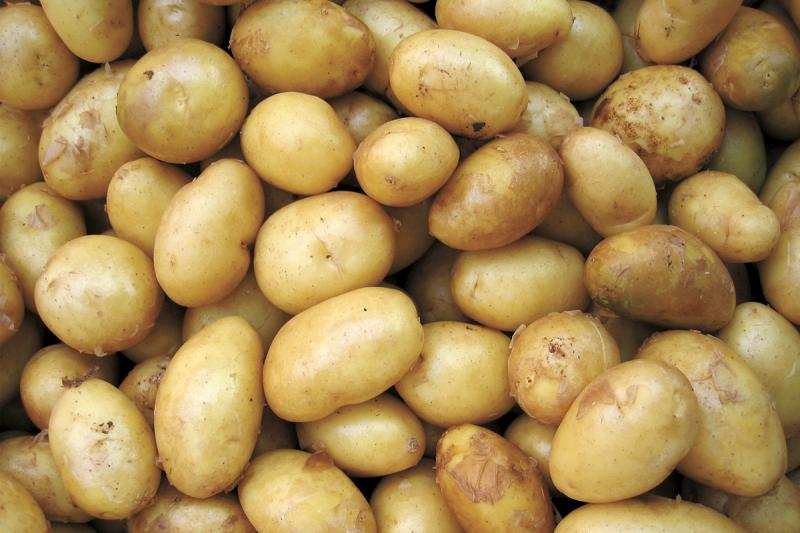As gardeners and cooks we seem to be constantly on the lookout for the newest and the best; the French phrase for the very best is the crème de la crème or literally the cream of the cream. For the lowly potato what can be best of the best or newer than new? New potatoes are those small potatoes a few inches around that show up early in the season, but even newer than new potatoes are “creamers”: tiny two-inch wide potatoes named because they are traditionally cooked in a cream sauce with peas. July is a great time to plant potatoes that you will harvest when they are still small, the so-called “creamer” potatoes. They will be ready in just eight to 10 weeks after planting. These tiny potatoes are dug up before they are fully developed, and have less starch and a waxy, sweeter flavor.
Because you don’t need the plants to sprawl and form big tubers you can plant them very close together, less than a foot apart. As with most garden crops plant your potatoes in well-drained soil in full sun. Potatoes do best in slightly acid soil with a PH of 5.0 to 7.0, but will produce a decent harvest even in less than ideal soil conditions.
The hardest part of growing creamer potatoes might be finding seed potatoes to plant. If you cannot find seed potatoes this late in the season, you can always use whole potatoes from the supermarket that are certified organic so have not been treated by growth retardants. Cut each potato into pieces with at least one eye each. Let the cut potatoes dry out slightly for a day or two so the cut scabs over. This will help keep them from rotting once planted. You can also just use any small whole organic potato without cutting.
Set each seed potato three inches deep and about a foot apart in the row. As the potato plants grow, gently hill up soil around them. This will prevent the underground tubers from getting sunburned when exposed to the air.
For best results, keep your creamer potato patch weed-free. A straw mulch will keep weeds down and help hold soil moisture. Never plant potatoes in the same spot as last year so you don’t spread soil-borne diseases.
After eight to 10 weeks or right after your potato plants are done flowering, you can dig up your creamer potatoes. Carefully dig around the plants to pick the tiny tubers by reaching into the soil and plucking individual potatoes, leaving the rest in the ground to harvest later.
Any potato variety can be grown for creamer potatoes, although popular choices are Yukon Gold and Red Norland, along with fingerling varieties such as Rose Finn Apple and Russian Banana.
Creamer potatoes are best eaten the same day that they are dug. Their skins are tender so do not need peeling. They are excellent when boiled whole and served in a cream sauce or cut unpeeled and made into potato salads. Try tossing the whole boiled creamer potatoes in butter, garlic and rosemary.
Fresh lemon juice added to mayonnaise is a classic accompaniment. Creamers even make quick frying home fries.
Creamer potatoes are nutritious, with more potassium per pound than bananas, are high in fiber and vitamin C, vitamin B6, niacin, thiamine and have no cholesterol.
Plant your potatoes now and in about two months you will have your own gourmet crop of creamer potatoes. These tiny, new baby potatoes just might be the cream of the crop.






















































